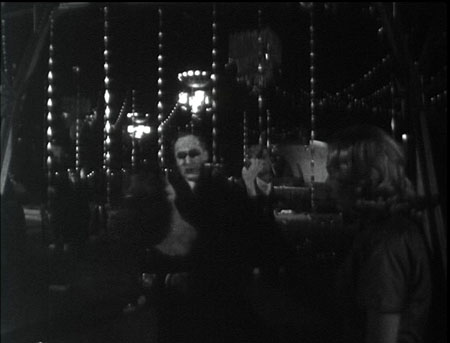DIRECTED BY: Patrick Epino
FEATURING: Al No’mani, Scott McNairy, Rudy Ramos
PLOT: When he’s scarred in an assassination attempt on the eve of the Kuwait invasion, a mute Saddam Hussein body double with no skills or interests beyond impersonating the Iraqi dictator loses his job and moves to Los Angeles to start his life over.

WHY IT WON’T MAKE THE LIST: More quirky than weird. There are some offbeat montages, including a nutty but oddly appropriate music video stuck into the middle of the film, but not enough to elevate it to true weirdness.
COMMENTS: No doubt about it, it’s Al No’mani’s airy and amiable performance as Saddam Hussein impersonator Mounir that keeps Mr. Sadman, a low-key indie comedy with an inventive premise but not quite enough laughs or plot, afloat. No’mani is the requisite dead-ringer for the fascist dictator. But more importantly, with his arsenal of friendly, vulnerable, quizzical, and despondent expressions, Iraqi-born No’mani (who died soon after filming was complete) invests his silent character with a surprising amount of humanity, turning him into something like an unhinged but harmless and sweet uncle for whom the audience roots. It was a gamble to make Mounir mute, but it pays off; the handicap gives the character an unexpected everyman aura that makes his sparse backstory irrelevant. The film features some mild satirizing of the subculture of struggling L.A. actors and technicians trying to break into the Hollywood film industry; there’s a deeper warning about the absurdity of forging our own identities by emulating celebrities, but there’s no preaching. The message is implicit in the plot. The script scores occasional chuckles, particularly with a pair of pot-smoking Hollywood wannabes whose minds get blown when Mounir walks past them at a party as they’re watching Saddam on CNN, and a scene where the middle-aged Iraqi plays basketball with some homeboys. There are also a few groaners: Mounir’s antagonists are FBI Agents Wang and Johnson (a couple of dicks, get it?) True to the title, there is an undercurrent of melancholy, and Sadman is indebted as much to the classic alienation films of the late 1960s and early 1970s as it is to contemporary quirky indies. There’s an explicit citation to Taxi Driver, an obvious tribute to The Graduate, and scenes of a man-child in a ridiculous costume strolling down city streets oblivious to urban reactions can’t help but bring to mind Midnight Cowboy. The spirits of light comedy and despairing loneliness sometimes mix uneasily—and the laughs are largely jettisoned by the finale—but for the most part, it works okay. The cinematography, music and editing are all professional. The script requires some leaps of faith: for example, I wasn’t convinced Mounir’s new-found Hollywood buddies would risk jail time to protect him from the FBI. With the exception of No’mani and Rudy Ramos as a hotel operator, the performances are spotty. But the Iraqi’s expressive facial acting lifts the film to something that, while uneven, is often touching.
As appears to be increasingly the case in a movie business convinced its customers are demanding fewer alternatives to repetitive Hollywood fare, Mr. Sadman has not found a distributor. The director is currently self-promoting the picture, and it can be downloaded for $8 from the Mr. Sadman site. The picture quality of the download is good, and I had no problem burning it to a standard DVD+RW for viewing on my television screen (individual results may vary).
WHAT THE CRITICS SAY:




